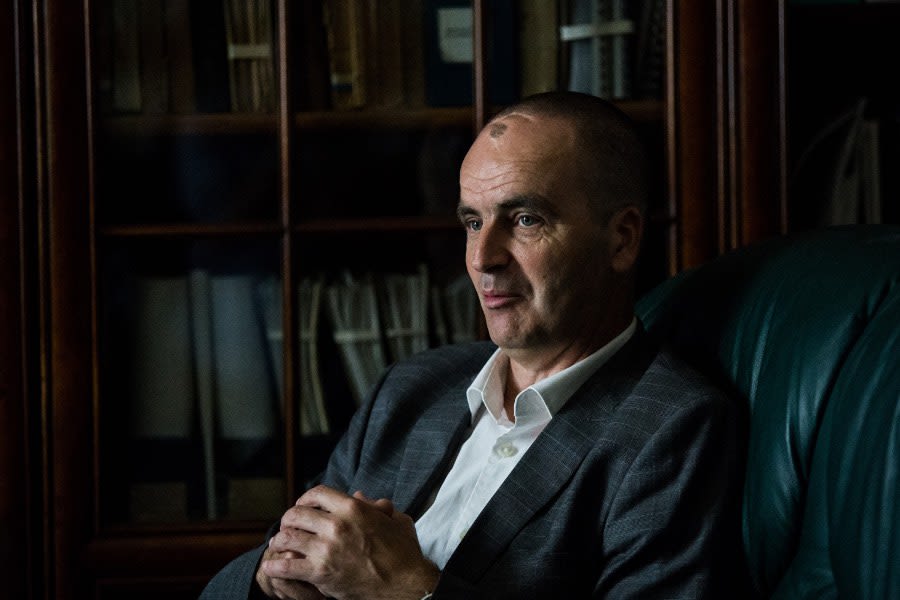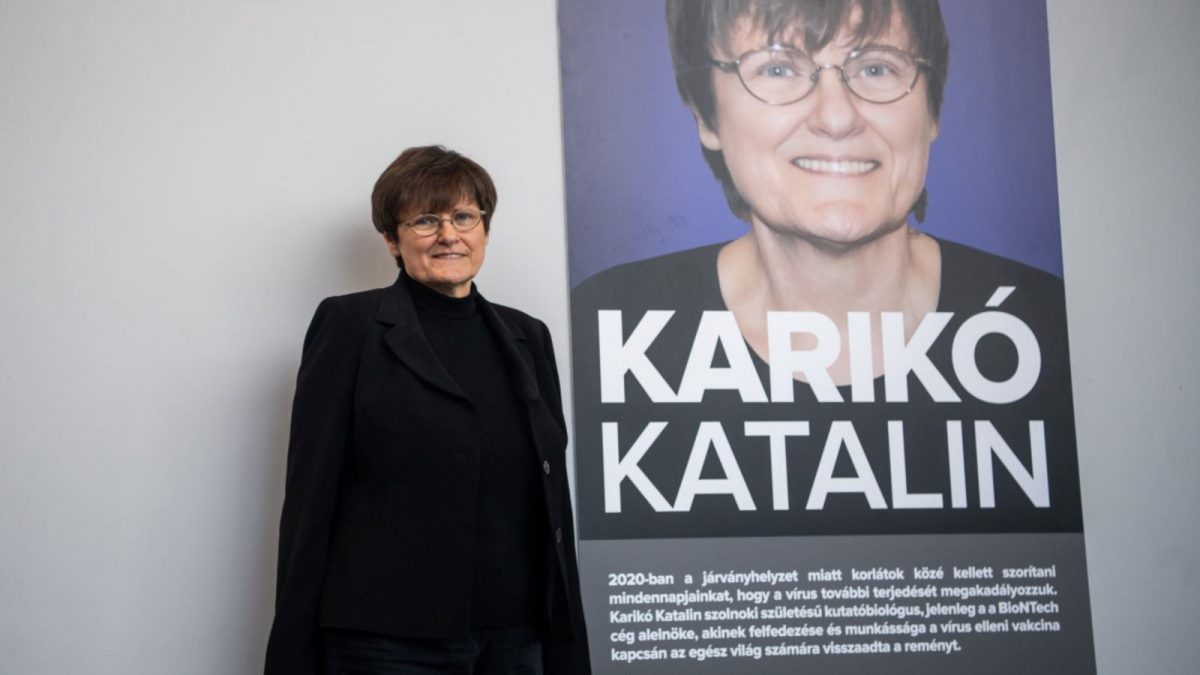“Karikó’s assertion cannot be refuted” – the director general of the Historical Archives of the State Security Services about the agent accusation
It was explosive news that Hungarian scientist Katalin Karikó, who played a key role in the development of vaccines using mRNA technology, confirmed that she had been recruited by the state security services in the late 1970s. The director general of the Historical Archives of the State Security Services (ÁBTL) tells our publication that Karikó’s “index card six” can indeed be found in their institution. What does this document reveal? What is General Director Gergő Bendegúz Cseh’s basis for saying that Katalin Karikó is telling the truth when she claims that she was blackmailed and did not harm anyone? This interview was originally published in Hungarian.
– There has been a debate about agents ever since the change of regime. One view is that agents are inherently guilty, another is that those recruited during the communist dictatorship are often victims themselves and should be treated as such until it is clear whether they harmed others or not. Which opinion do you share?
– The position of the archives has always been that it is not possible to deal with the agent issue in a general way, this problem should not be simplified. We did not agree that agent lists should be published on their own, without restrictions, precisely because such information may be misleading or false if we do not know the specific facts. We have always believed in the need to provide as much room as possible for research and that every specific case or instance has to be examined individually.
– So, it is not the recruitment itself that is the decisive factor?
– No. You need to examine what situation that person was in and what they did in that particular situation.
– You are not only the director general of the archives containing the agents’ recruitment documents and reports, but also their researcher. Therefore, you can put the story of Katalin Karikó’s recruitment in the context of that time. What do we know, what situation did Katalin Karikó get into and what did she do?
– What has been made public is an “index card six.” This type of archival aid was used to keep a record of the people in the network collaborating with the various agencies of the former Main Group III. There is an old debate about what an “index card six” proves. The law does not consider it to be definite proof because it does not include the signature of the person in question. So, it is possible for an agent-handler officer to create an “index card six” about someone who was not actually recruited. In addition, that document by itself does not reveal anything about was activity was carried out by the person in question.

– Credibility is not an issue in this case: Katalin Karikó acknowledged in a statement that she signed the recruitment declaration.
– Indeed. However, the index card alone does not reveal anything about what she really did.
Here, the person in question acknowledged the fact of the signing and says that she did not harm anyone and did not file any reports – based on our current archival knowledge, this cannot be refuted. We have no reason to doubt what Katalin Karikó says.
– What do you base this on?
– For example, on the fact that the number of the so-called working file should have been included on the index card. This was where the state security agencies collected the handwritten or typewritten reports of a particular agent and wrote its number on the index card. The number of the working file is not visible or legible on this card. There is no record of the working file number in the archives, either.
– And not of the working file itself, either?
– According to our current knowledge, Katalin Karinkó has no working file.
– So, it is possible to confirm what Katalin Karikó said, that she did not file any reports?
– There is no archival evidence to contradict or refute Katalin Karikó’s statement.
– Did you find any other documents besides the “index card six”? Are the recruitment proposal or the recruitment plan in the archives?
– No. When someone is recruited, a so-called recruitment dossier is created containing the recruitment proposal, the environmental study and the recruitment plan.If it is possible by some means to persuade the person to collaborate, then a recruitment statement is prepared. An alias is chosen, and they commit to secretly collaborate. This information, this data cannot be found at all in the archives.
– What is the aim of the environmental study?
– The environmental study contains why the individual should be recruited, what the purpose of their employment is, for what reason it is worth dealing with them at all. Later, they search for their weak points, all their personal qualities, every important circumstance that can influence their employment. They didn’t only check what the person can be blackmailed with but also whether the person in question is sufficiently trustworthy.
– Can a father with ties to the 1956 revolution be a vulnerable point, as Katalin Karikó says?
– Yes, it is very typical. It was the general practice that they were able to blackmail someone because of their own activities during the revolution or because of their family member’s activities in 1956. After 1956, several hundred people were executed, so someone who was threatened with prison or other sanctions came under formidable pressure.
– Even at the end of the 1970s?
– Having a 1956 past was a stigma, with fading intensity, but it was a threat to many families until the change of regime. It cannot be ruled out at all that at that time it could still have threatening power.
– Those recruited by Group III/II did not report primarily on their work colleagues, their task was counterintelligence. What types of spies can there be at a research institute? What would have Katalin Karikó had to prevent?
– Since we have no sources suggesting this, whatever we say is fiction. In general, the ambitious young scientists employed by a research institute were important targets of the state security services because they were in touch with many people and had domestic and international contacts and influence in their profession. There could have been many reasons for Katalin Karikó to be included in a target group.
– What is the reason that no other document survived except for the one single “index card six”? Is it possible, for example, that the documents were destroyed during the turmoil surrounding the change of regime?
– The lack of sources indicates that she truly did not carry out any activities. Of course, documents were destroyed, there are important cases which cannot be researched even today, but the information that we currently possess allows us to conclude that what was said by Katalin Karikó is in accordance with reality.
The antecedents
A few days ago, Kuruc.info published excerpts of a document according to which the state security services recruited Katalin Karikó in 1978. As their source, they pointed to a tome published by László Bálint in 2017: “The characters in the network files: The files of the state defense and state security network in Szeged and Csongrád County in 1945-1990”. According to this, László Salgó, who later became national police chief, recruited the researcher to be a counterintelligence agent. The author himself was an agent handler for state security. In a statement released on
Saturday, Katalin Karkó admitted that “in 1978, when I began working as a scientific assistant, they looked me up, they found me, and they confronted me with a forced choice.
According to the researcher, she was blackmailed with her father’s past, who had been given a suspended prison sentence because of his activities during the 1956 revolution. That is why she signed the recruitment declaration.“In the years that followed, I did not file any written reports, I did not harm anyone. I had to leave to continue my scientific activities and research. During the past 36 years, I carried out my research work and activities in the interests of healing people. Never again was anyone able to break me or distance me from my goals,” she declared.
Nyitókép: MTI







